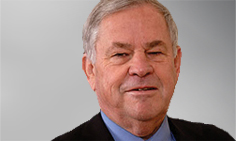SO begins 2014, the centenary year of the Medical Journal of Australia, to be celebrated on 4 July.
“The New Year opens in hope, with opportunity, with the certainty of good things, good business, and carefree minds”, said the New York Times on the first day of 1914. The Economist’s publication The World in 1914 used this quote to illustrate the unexpected shock created by the outbreak of World War I on 28 July 1914.
Like the events of Pearl Harbor and, decades later, 9/11, the Great War was virtually unpredicted, although explicable in retrospect — a “Black Swan” event, in the words of Lebanese American probability scholar Nassim Taleb. Notably, it was Willem de Vlamingh’s exploration of Western Australia’s Swan River in January 1697 that led to the first, completely unexpected, European sighting of black swans.
An editorial in the first issue of the Journal suggested that in Australia, too, our eyes were turned towards stability and progress (MJA 1914; 1: 9). The possibility of upheaval and war was not in the air. Comment in the Journal about the war only began in earnest in January 1915 but, thereafter, articles appeared regularly, covering surgery for battle trauma as well as medical topics.
During 2014 we will republish excerpts of articles from the past century of the Journal’s journey, marking the Black Swans that heralded unexpected discovery and change. We will celebrate our centenary with a 1-day seminar and dinner at the University of Sydney, examining lively aspects of the future of medical publishing.
A supplement exploring the history of medicine in Australia over the past 100 years will accompany the centenary issue of the MJA in July.
The wellbeing of those facing disadvantages in terms of health has been part of the history of Australian medicine since the time of treating transported convicts in the 18th century, and it has also been part of the MJA’s story.
The state of prisoners’ health today and its implications for the wider community are well illustrated in a Perspectives article in the latest issue of the MJA, which outlines a proposal for managing hepatitis C infection and related liver disease in prisoners. Correctional facilities are a major locus of transmission and a significant generator of serious liver disease that will require complex management.
Other articles in the current issue also remind us that medicine is a social enterprise that responds to the needs of the vulnerable.
Emergency physicians know all too well that they deal with the tips of icebergs each day. In a letter the authors show that sometimes the icebergs of child abuse float past undetected among the many children presenting to emergency departments. An accompanying editorial describes the scale of this public health and social problem and the tensions involved for doctors in reporting cases of abuse, despite mandatory notification.
Doctors committing to having the right clinical skills and judgement can help bring this often hidden problem out into the open, but it can be a difficult and conflicting challenge to do so.
The residents of aged care facilities also tend to be hidden from community view, but their problems are often evident to stretched facility staff, families and carers. A Perspectives article argues that inappropriate use of medicines in these facilities is symptomatic of systemic problems in staff training and medical oversight that reduce the use of non-drug interventions for behavioural and cognitive problems.
On the verge of commencing our second century, the MJA will reflect on our responsibility to the medical profession and the Australian community. We will remain strongly committed to publishing medical insights built on hypotheses and deductions. The MJA has also served as an advocate for a fairer and healthier society, and this should be treasured.
But whatever formal agenda we set, remaining open to the unbidden — Black Swan events, both good and bad — will help us make the most of opportunities and respond quickly when unforeseen challenges confront us.
Professor Stephen Leeder is the editor-in-chief of the MJA and professor of public health and community medicine at the University of Sydney.
This article is reproduced from the MJA.

 more_vert
more_vert